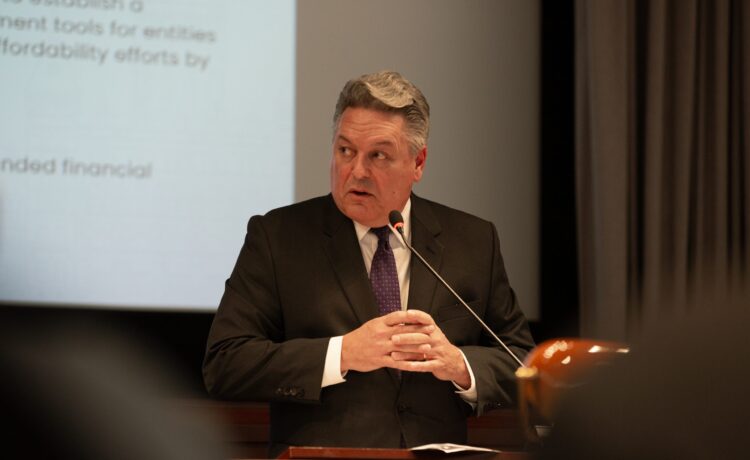Gov. Ned Lamont’s administration has directed all state agencies to tally their unspent federal pandemic relief by Monday and update totals on the soon-to-expire grants monthly thereafter.
The directive from Lamont’s budget director, Jeffrey Beckham, was issued around 11 a.m. Friday, just hours after The Connecticut Mirror published a story in which legislative leaders from both parties scolded the administration. Lawmakers want to use whatever is left of the $2.8 billion that state government received through the American Rescue Plan Act to supplement higher education, social services, health care and other core services in the next state budget.
[CT’s big budget question: How much COVID relief money remains?]
“Given the importance of ensuring that Connecticut fully utilizes all [ARPA] funds, strict adherence to the submission date is critical,” Beckham wrote to agency heads. “Late submissions are not acceptable.”
The General Assembly’s Appropriations Committee pressed Beckham on Feb. 8 — one day after Lamont proposed his adjustments to the 2024-25 state budget — for an update on available ARPA funds. Most of Connecticut’s allocation has been spent, and all funds must be assigned by Dec. 31.
But the budget director told them the administration had identified at least $55.7 million from earlier legislative allocations that could be redirected.
“We think it could be a larger number,” Beckham said, adding the administration still was surveying departments, and this could take a while. “I just don’t know what that is yet.”
Since 2022, legislators have ordered more than 400 ARPA allocations, many of which come with complex federal rules governing reporting and usage. The administration says some private entities declined to accept federal money, given the strings attached. Other ventures were required to match funds to ARPA dollars and found they could not.
But legislators are hungry for as many federal dollars as Lamont can find.
House Speaker Matt Ritter, D-Hartford, and Senate President Pro Tem Martin M. Looney, D-New Haven, both have said lawmakers hope to add $300 million to $400 million to the preliminary $26 billion budget the General Assembly adopted last June for the 2024-25 fiscal year.
That plan already exceeds the spending cap system — which tries to keep expenditure growth in line with personal income and inflation — by about $30 million, according to Beckham’s office.
But federal pandemic relief is exempt from the cap system. Lawmakers also have worked around that limit by carrying surplus from one fiscal year into the next. And because those “carry-forward” dollars, as legislators call them, technically were appropriated in a prior fiscal year, they won’t count against future cap calculations when they are spent.
The current budget is on pace for a modest operating surplus of just $168 million. And because sales tax receipts have been weak, that number could shrink between now and June 30. There’s another $479 million that’s being saved this year through the “volatility adjustment,” but it’s already earmarked to help pay down Connecticut’s huge pension debt, which topped $37 billion entering this year, according to the administration.
Democratic and Republican leaders alike last week chastised the administration for not having provided any update on federal pandemic relief even five weeks after appropriations leaders had asked for it. That committee must issue its own recommendations for the next state budget by April 5.
Ritter said there “is probably a little bit of gamesmanship” behind the lack of information. “We need the number sooner rather than later.”
House Minority Leader Vincent J. Candelora, R-North Branford, also said “I think it’s partly by design. And I think it’s going to push the budget negotiations out of transparency.”
Administration officials have expressed frustration repeatedly that legislators have assigned temporary ARPA dollars to cover recurring expenses in core programs.
Legislators counter they used whatever funding was available to assist higher education, social service and health care, and that some of these programs had financial challenges that existed years before COVID first struck Connecticut in 2020.

















